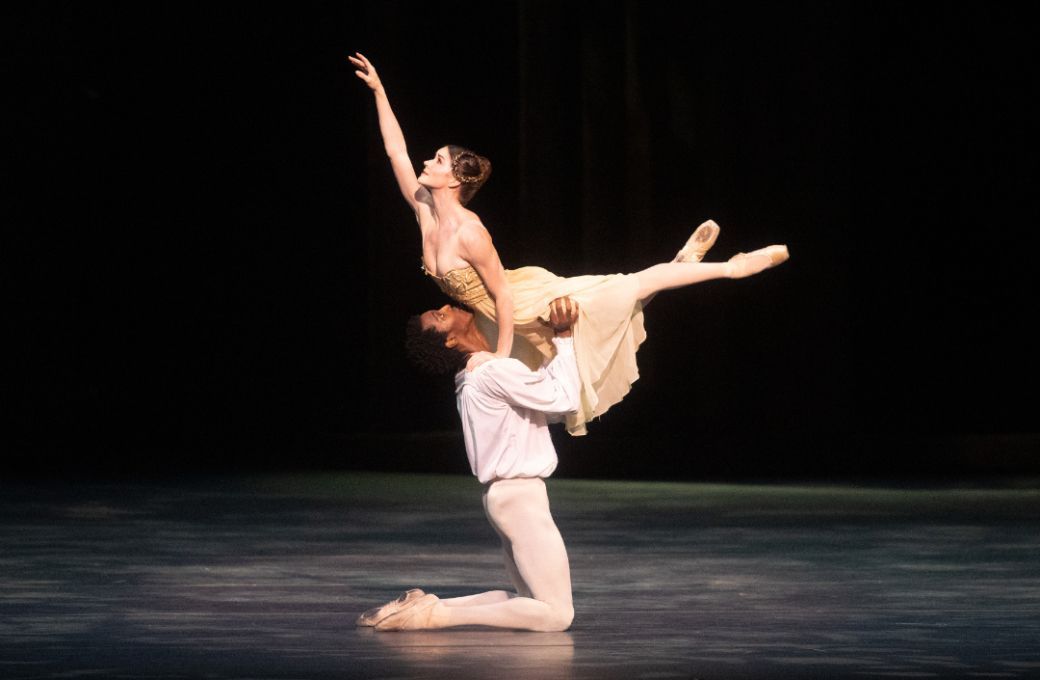When Sir Kenneth MacMillan’s now-classic rendition of Romeo and Juliet premiered in 1965, there was quite a bit of controversy about the casting, with the original leads Lynn Seymour and Christopher Gable sidelined in favor of ballet super-couple Margot Fonteyn and Rudolf Nureyev. In the years since, there has been two distinct strains of Juliets. The Seymour strain emphasizes the headstrong, rebellious aspect of Juliet’s personality. The Fonteyn strain is more of a traditional ballet heroine – romantic, lady-like.

Yesterday, American Ballet Theatre's Romeo and Juliet had a debut where the dancer almost completely followed Fonteyn’s example in interpretation. Cassandra Trenary’s Juliet was sweet, girlish, considerate of her elders, a bit contained. When her parents ordered her to marry Paris, Trenary’s body did not crumple with disgust as she danced with Paris. Instead, she meekly accepted. In that scene where Juliet sits on the bed and contemplates her fate, many ballerinas have created a miniature mad-scene as the music swells dramatically in the background. Trenary sat on the bed, face rather expressionless, and calmly gathered her thoughts before departing.
Whether you liked Trenary’s debut depends on whether you cotton to this sort of interpretation. I personally found it pretty but bloodless. Technically, Trenary is wonderful – she has a buoyant jump and silky smooth bourrées. Even though she’s extremely petite, her highly arched feet made beautiful shapes during the many swoony lifts of the choreography.
Calvin Royal was a late substitution for Herman Cornejo (out with Covid). Royal is also new to the role of Romeo – his own debut had taken place just two days earlier. Royal steps onstage with his cape and sword and immediately looks like a Romeo – young, handsome, with an impetuous expression. His interpretation of Romeo was also sweet and exuberant, without the edge of danger that some dancers bring to the role.
This role, however, exposes a few of Royal’s weaknesses as a dancer. One is the fact that his feet do not point, which spoils the look of his line in this white tights role. The other is his jumps – he can launch himself into multiple rotations in the air without issue, but his landings are a bit sloppy.
Royal and Trenary probably had little rehearsal time as Cornejo was such a late scratch, so their many lifts in the three duets (balcony, bedroom, and crypt) didn’t have the sweep and abandon that audiences crave. I’m sure with more time, rehearsal and partnering, this aspect of their performance will improve.
Otherwise, ABT’s Romeo and Juliet holds up well – the choreography by MacMillan remains fresh and a perennial crowd-pleaser. The sets by Nicholas Georgiadis are still stunning. The large cast gives opportunities to dancers who specialize in character roles. Zhong-Jing Fang was compelling as Lady Capulet – icy, imperious, with a hidden passion that spilled out in her flailing, overwrought reaction to Tybalt’s death.
Another standout was Jonathan Klein (Mercutio). Klein looked like he was auditioning for Romeo – his clean lines, effortless elevation, and naturally noble bearing made him an audience favorite yesterday afternoon. I can’t wait to see his Romeo now. Longtime corps member Luis Ribagorda was a sweet Benvolio.
So not a perfect Romeo and Juliet. But it was a fresh, promising cast, and I look forward to watching them grow in these roles.


